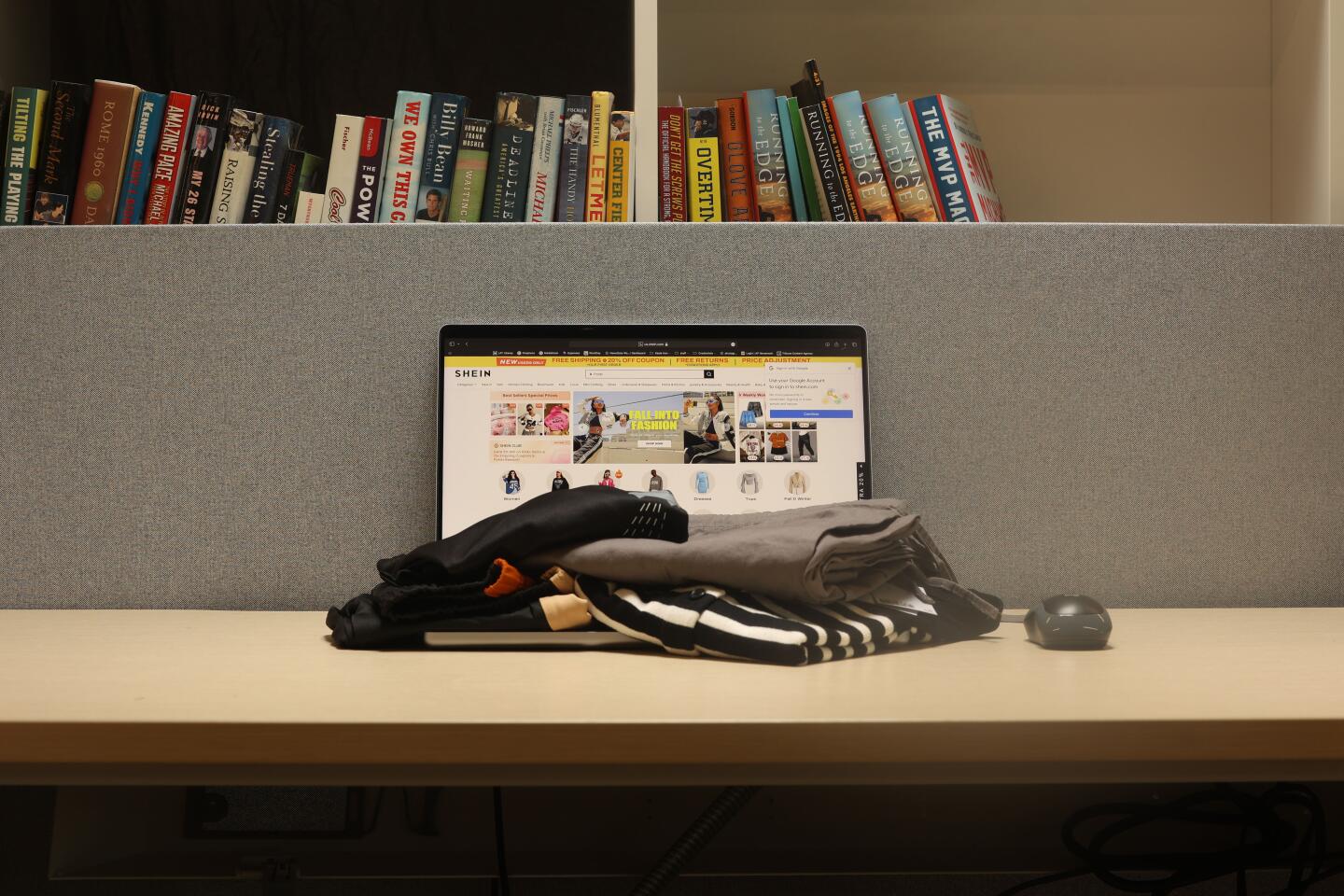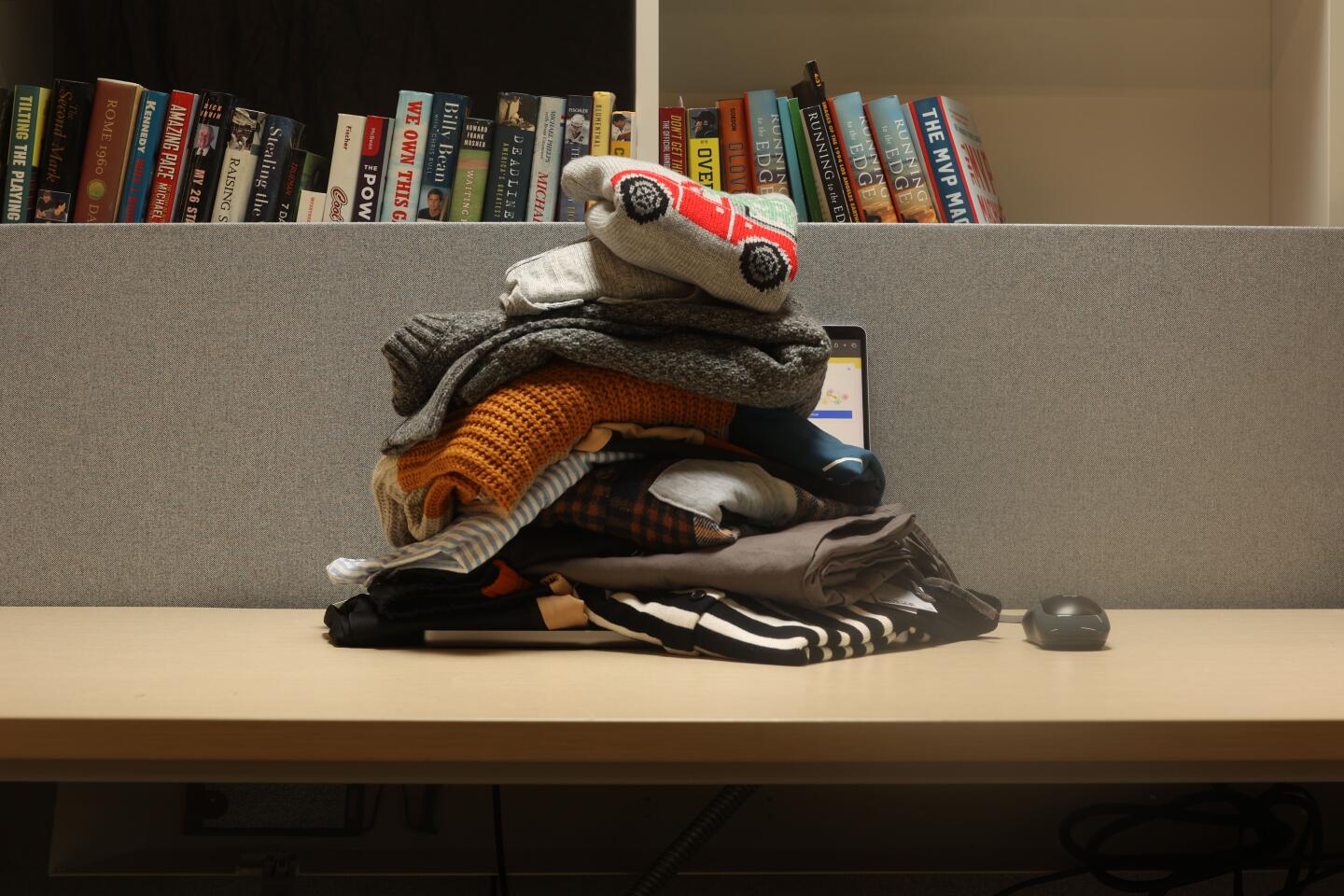- Share via
During the pandemic, up-and-coming content creator Angie Wang was startled by the increasing speed of fashion trend cycles.
The 28-year-old IT portfolio analyst had already picked up content creation after watching influencers like Lauren Giraldo, whose most recent viral fame came with her “12,3,30” treadmill workout. Content creation, Wang says, allowed her to lean into her creative side, and it doesn’t hurt that she is able to make just as much money, if not more, from her online fashion and beauty posts.
But those short-lived trend cycles meant Wang needed to — quickly — up her game, so she turned to fast fashion brands like Shein. “The first time I ordered something, it was just some T-shirts and jeans, and they came really quickly,” Wang said — invaluable for the fast and furious social media ecosphere.
Can anything slow fast fashion down? Lawmakers are giving it a go
Lianne Calvo, another fashion aficionado, has a different take on the pursuit of something new for her closet: Rather than embrace fast fashion, she prefers to shop secondhand. When asked about the quality of used clothing, the 19-year-old UCLA junior pointed to her shirt and smiled.
“I’m actually wearing my mom’s shirt,” Calvo said. “She was wearing this when she was younger than me. I feel like the clothes that I have from her closet, they look pristine.”
Fast fashion — items that move from concept to storefront availability in a matter of weeks — is one of the great paradoxes in retail, especially among younger consumers. Consider: The Instagram hashtag #sheinhaul — under which users post about their large purchases from Shein — is creeping up to 1 million posts. In one video, an influencer compares stock photos of clothing she ordered from Shein with images of her wearing her purchases, attracting almost 90,000 likes.
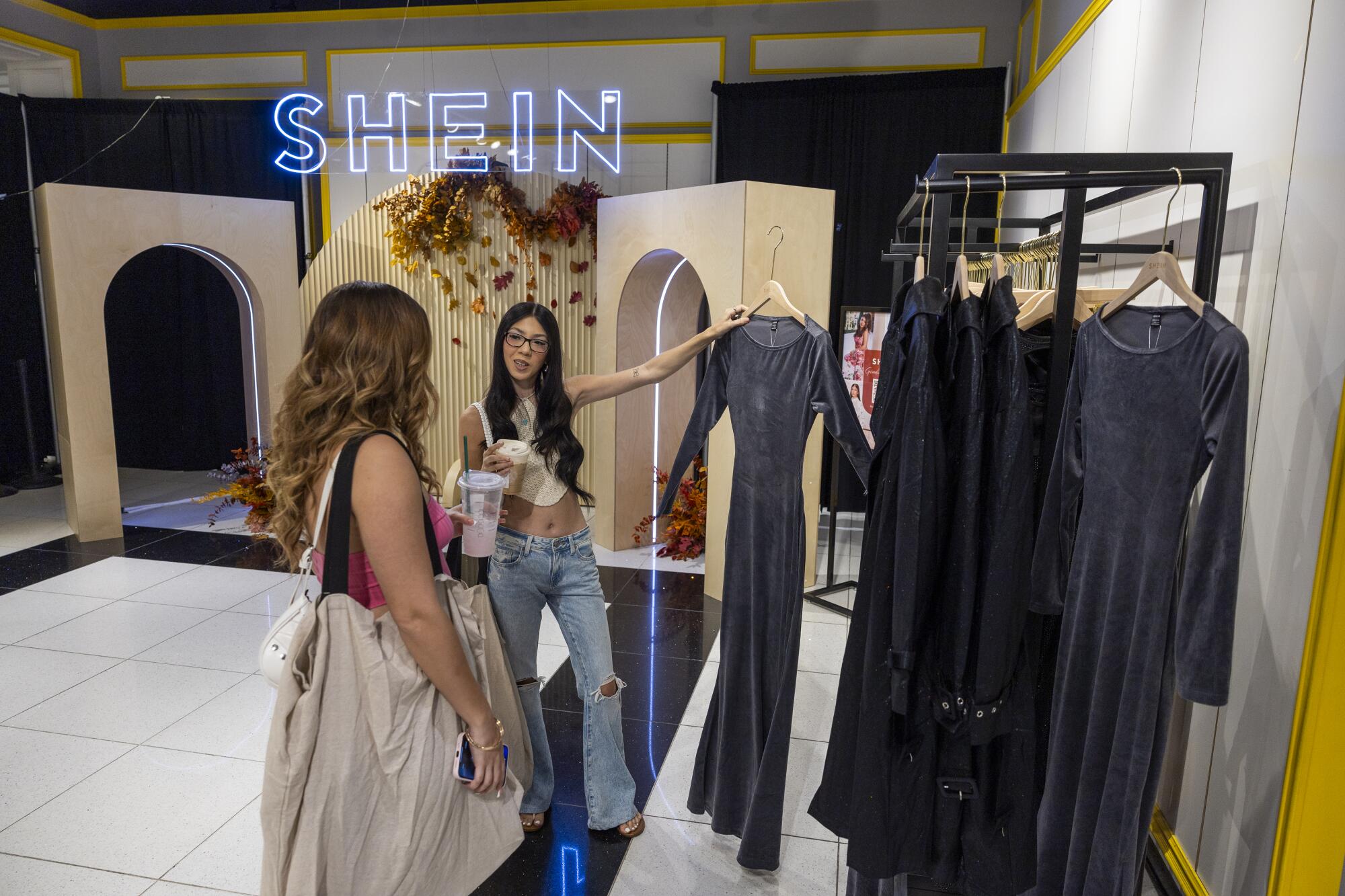
On the other hand, a search for “fast fashion” on YouTube brings up video essays by Gen Z creators with thousands (and sometimes millions) of views, each lamenting fast fashion’s effects on the environment and exploitation of workers.
In one 31-minute piece, YouTube personality Jordan Theresa describes how styles that were popular during the COVID-19 lockdowns are now being labeled as outdated, explaining how trend cycles that move at such high speeds make consumers want to buy more clothing. She specifically referenced the negative feedback the internet gave after seeing the costuming for the 2022 film “Not Okay,” with many feeling its outfits belonged in 2020.
“The internet was slating these outfits,” she said in the video. “Twitter had an absolute heyday with it, saying that the outfits looked ugly.”
Thus far the outcry against fast fashion has not put much of a dent in its popularity. Can anything stop the juggernaut?
Zara, a Spanish chain of stores that opened in 1975, is often described as the first fast fashion retailer, but the market has since expanded to include companies that exist only online, such as Shein or Temu. During the COVID-19 pandemic, Shein has seen its market share more than double in the United States.
Magali Delmas, a professor of management at the UCLA Institute of the Environment and the Anderson School of Management, points out that this growing success is associated with increased globalization, cheap labor — and low costs.
Most people, she says, are unlikely to change their consumption habits unless there is a benefit for them; they “don’t want to do any sacrifice for the environment or sustainability.”
Delmas points to legislation as a possible solution to the bad practices associated with fast fashion. Such laws might require companies to disclose their carbon footprint or ensure that consumers or companies pay a tax when purchasing or producing unsustainable items. In the California Legislature, the proposed SB 707 would require clothing producers to submit plans to the California Department of Resources Recycling and Recovery describing their strategies for the “collection, transportation, repair, sorting, and recycling, and the safe and proper management of apparel.” As of this writing, the bill is headed to the governor’s desk.

Some consumers aren’t waiting for legislation to explore sustainable shopping. Rachel Kinnard, an educator and clothing designer based in L.A., said her fall 2023 class on sustainable fashion at Chapman University was fully enrolled and engaged.
Kinnard included immersive lessons in her curriculum, such as a clothing swap, a mending workshop, and a visit to the Garment Worker Center downtown, an advocacy group that supports employees in the apparel industry. She said her students found activities such as the clothing swap to be exciting, particularly because they allowed students to have fun with their friends without spending money.
“The most sustainable thing you could do is not buy things,” Kinnard said.
Mindy Luo, a 21-year-old senior at UCLA, is the president of RefineLA, a campus organization focused on sustainable fashion.
“Most of the time, if you just work with what you have, you’ll probably realize that you have a lot of cute stuff that you didn’t think about before,” Luo said.
Through her work at RefineLA, Luo said she aims to help her peers find outlets for their self-expression through secondhand fashion — especially because thrifted pieces sometimes have an individuality that off-the-rack clothes lack.
“You’re really missing out if you’re not participating in this new culture of buying secondhand,” she said.
Luo first heard about the ethical concerns surrounding fast fashion in high school through a video on Teen Vogue’s YouTube channel. She quickly grew passionate about the topic, and when she started at UCLA, she sought out a community of creatives also looking to be ethical consumers.
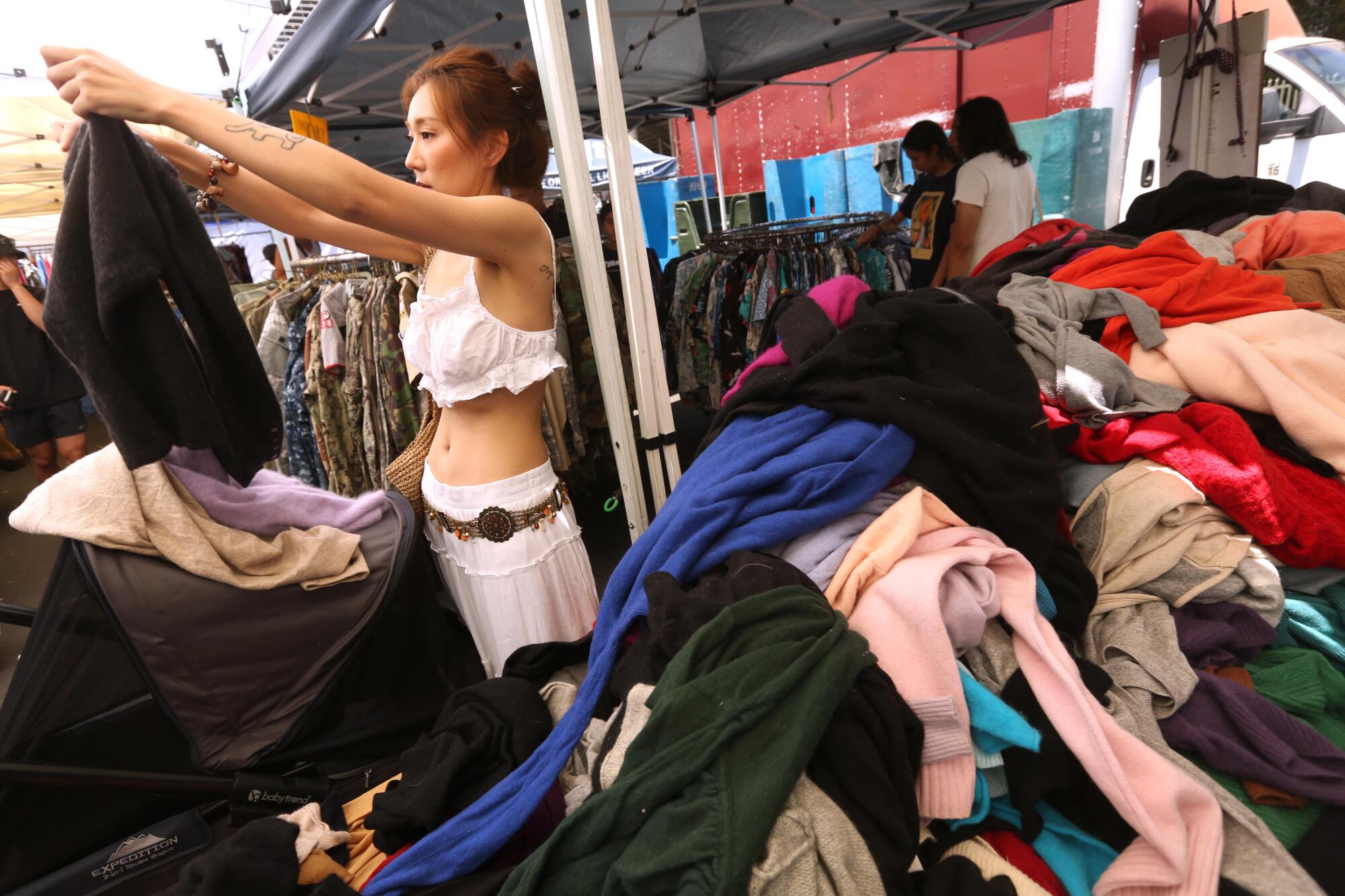
RefineLA has pursued a variety of endeavors, including zines and flea markets — where Luo now gets most of her clothes. Calvo, the club’s co-vice president, said most items at the flea markets sell for less than $10. For some of the flea markets, RefineLA has collaborated with online resale platforms like Depop and Poshmark, efforts that usually involve the business providing a budget for RefineLA members to buy secondhand items in exchange for branding privileges. Poshmark also sponsored the team’s fashion show on campus in March.
Students at UCLA are not alone in their push toward more sustainable shopping. At schools across the nation, from the University of Texas to Swarthmore College, members of Gen Z are banding together to effect change.
Of course, one large factor for young consumers is price, and sometimes the prices on Shein or Temu are unbeatable even by secondhand retailers.
Wang, the content creator, who lives in Philadelphia, says she has become more aware of the concerns surrounding fast fashion and is trying to limit her consumption. But she still sees it as a useful resource in some circumstances and believes clothing she has purchased from fast fashion giants compares in quality to more expensive brands at a fraction of the cost.
“If you’re getting a reasonable amount of things, or things that you’re going to keep for a long time, I feel like it should be perfectly OK, because there’s so many other brands out there that are not fast fashion but they cost 10 times more,” Wang said.
Even Calvo allows herself to purchase something brand new every once in a while, the latest being new shoes from Nordstrom.
“I wouldn’t mind buying a pair of shoes secondhand or at a thrift store,” Calvo said. “Obviously, it’s a lot of cleaning. But if I see a nice pair outside [of a thrift store], I would definitely splurge on that.”
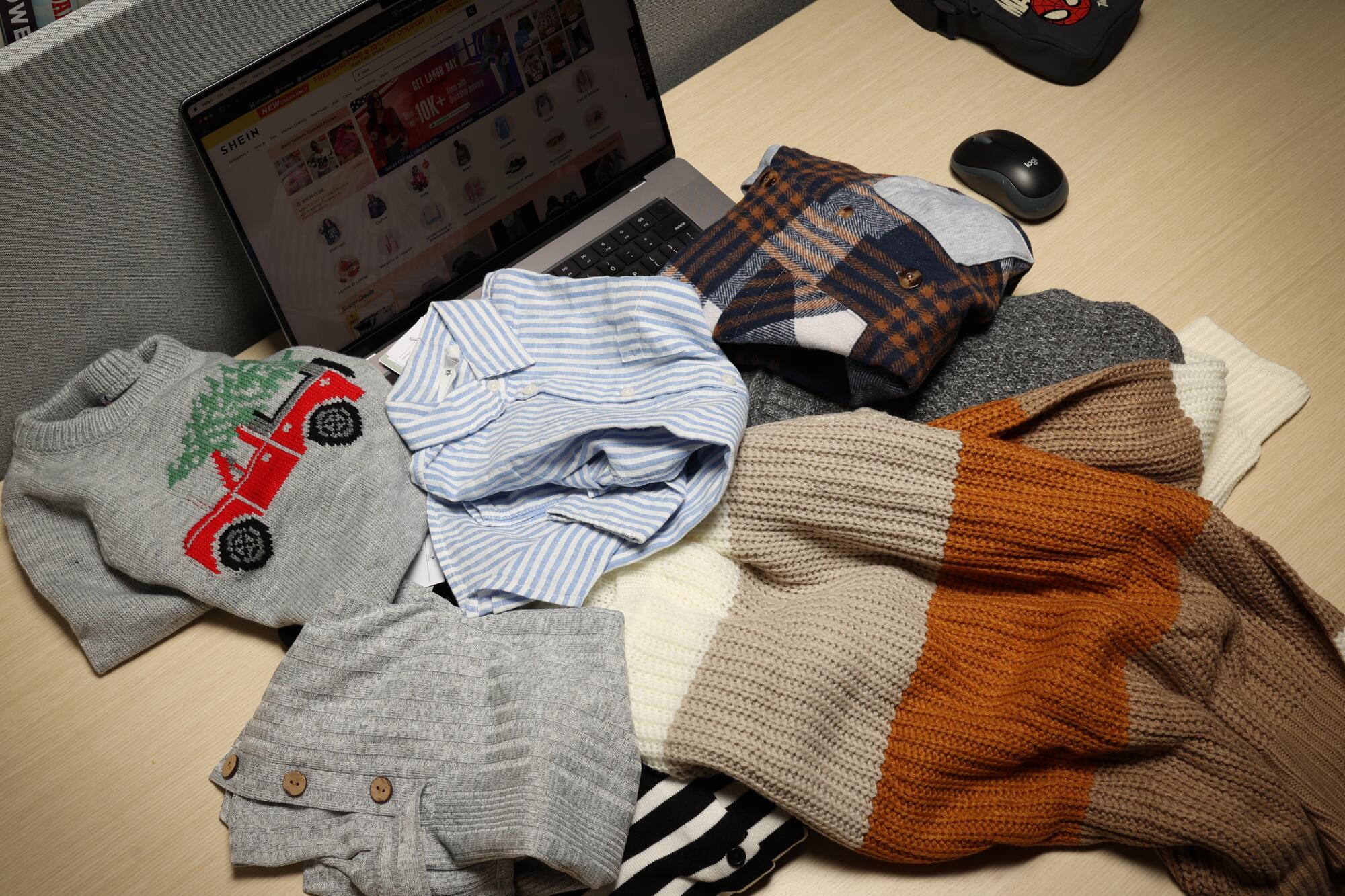
Others are finding innovative ways to engage consumers with secondhand clothing outside of thrift stores. Mia Parra, a recent UCLA graduate and the owner of Market 10:42 — a Southern California-based flea market — curates events with many vendors selling vintage pieces. As part of the vendor application process, prospective vendors must agree to not sell any fast fashion pieces, even if they are sourced secondhand.
Parra connects with her peers — and potential customers — on Instagram. Her @1042flea account boasts more than 37,000 followers, using bright and bold color palettes to grab attention, and at some flea markets, she hosts nearly 100 vendors.
In her course at Chapman, Kinnard also employed social media, asking her students to create short-form videos for their final project. One student used the opportunity to describe the history and usefulness of clothing swaps, which she first learned about in the class. But Kinnard is realistic about shopping habits, saying: “Sustainable fashion has never been more mainstream.”



